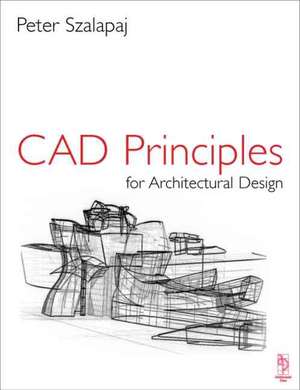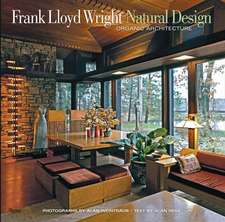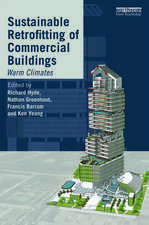CAD Principles for Architectural Design
Autor Peter Szalapajen Limba Engleză Paperback – 19 dec 2000
The ways in which CAD is integrated into the design processes of several leading edge practices is illustrated. Arising from these case studies is the emergence of a contemporary phenomenon of integrated CAD, in which all aspects of design schemes are brought together within computational frameworks that support the analysis of design proposals.
Szalapaj's view of CAD is one in which computers constitute a medium in which designers can express design ideas, rather than viewing computers as problem solving machines. For creative designers to successfully exploit CAD technology, CAD systems should reflect designers' intuitions as described by designers themselves
| Toate formatele și edițiile | Preț | Express |
|---|---|---|
| Paperback (1) | 233.31 lei 5-7 săpt. | |
| Taylor & Francis – 19 dec 2000 | 233.31 lei 5-7 săpt. | |
| Hardback (1) | 764.20 lei 6-8 săpt. | |
| Taylor & Francis – 7 feb 2017 | 764.20 lei 6-8 săpt. |
Preț: 233.31 lei
Preț vechi: 381.36 lei
-39% Nou
Puncte Express: 350
Preț estimativ în valută:
44.65€ • 48.48$ • 37.51£
44.65€ • 48.48$ • 37.51£
Carte tipărită la comandă
Livrare economică 15-29 aprilie
Preluare comenzi: 021 569.72.76
Specificații
ISBN-13: 9780750644365
ISBN-10: 0750644362
Pagini: 256
Ilustrații: 500 illustrations, bibliography, index
Dimensiuni: 189 x 246 x 17 mm
Greutate: 0.65 kg
Ediția:1
Editura: Taylor & Francis
Colecția Routledge
Locul publicării:Oxford, United Kingdom
ISBN-10: 0750644362
Pagini: 256
Ilustrații: 500 illustrations, bibliography, index
Dimensiuni: 189 x 246 x 17 mm
Greutate: 0.65 kg
Ediția:1
Editura: Taylor & Francis
Colecția Routledge
Locul publicării:Oxford, United Kingdom
Public țintă
Professional Practice & DevelopmentCuprins
Introduction; CAD Modelling and Analysis; CAD Objects; CAD Operations; The Development of Architectural Form from CAD Objects; Parametric Design; Design Interoperability; Postscript; Bibliography; Index.
Recenzii
'This book is fundamentally a primer for those eager to learn the magic of computer-aided architectural design...a very useful starting point for the student or architect...giving a novice insight into what people do at the coalface of architectural corporations.'
Architect's Journal
'Good introduction to how CAD can be used (not just machine focus!) - the reasons on why use CAD are well covered.'
H. Graham, Senior Lecturer, School of Architecure, University of Plymouth
Architect's Journal
'Good introduction to how CAD can be used (not just machine focus!) - the reasons on why use CAD are well covered.'
H. Graham, Senior Lecturer, School of Architecure, University of Plymouth
Descriere
CAD Principles for Architectural Design is aimed at design students and practitioners interested in understanding how CAD is used in architectural practice. This book makes connections between the basic operations that are common to most CAD systems, and their use in practice on actual architectural design projects.
The ways in which CAD is integrated into the design processes of several leading edge practices is illustrated. Arising from these case studies is the emergence of a contemporary phenomenon of integrated CAD, in which all aspects of design schemes are brought together within computational frameworks that support the analysis of design proposals.
Szalapaj's view of CAD is one in which computers constitute a medium in which designers can express design ideas, rather than viewing computers as problem solving machines. For creative designers to successfully exploit CAD technology, CAD systems should reflect designers' intuitions as described by designers themselves
The ways in which CAD is integrated into the design processes of several leading edge practices is illustrated. Arising from these case studies is the emergence of a contemporary phenomenon of integrated CAD, in which all aspects of design schemes are brought together within computational frameworks that support the analysis of design proposals.
Szalapaj's view of CAD is one in which computers constitute a medium in which designers can express design ideas, rather than viewing computers as problem solving machines. For creative designers to successfully exploit CAD technology, CAD systems should reflect designers' intuitions as described by designers themselves






